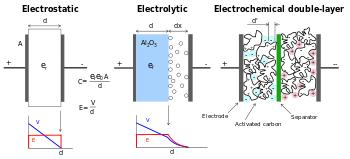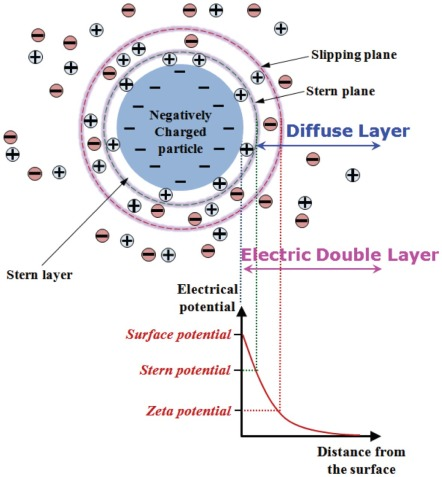
- +86 18120750932
- colin@xmsinuowei.com
- www.xmsinuowei.com

An electric double-layer capacitor is a high-capacity capacitor with very low internal resistance. It stores electric energy in an electrostatic field, in contrast to a regular capacitor which stores energy in an electric field. A supercapacitor has a much higher energy storage capacity than a regular capacitor and can be charged and discharged much more quickly. In addition, it has a longer lifetime and is much less sensitive to temperature. Supercapacitors are used in a variety of applications, from consumer electronics to electric vehicles.
The spacing between the double-layer capacitors is very small, resulting in a very weak voltage-withstanding capability, usually not exceeding 20V, so they are usually used as energy storage elements in low-voltage DC or low-frequency applications. The double-layer capacitors are widely used. They can be used as power balancing power for lifting devices, which can provide large current power, and as vehicle starting power, which has higher starting efficiency and reliability than traditional batteries, and can replace traditional batteries in whole or in part.

What are the characteristics of a double-layer capacitor?
1. High power density
It can reach 102-104W/kg, which is much higher than the power density level of the battery.
2. Long cycle life
After 500,000 to 1,000,000 high-speed deep charge/discharge cycles in a few seconds, the characteristics of double-layer capacitors change very little, and the capacity and internal resistance only decrease by 10% to 20%.
3. Wide working temperature limit
Since the adsorption and desorption rates of ions in double-layer capacitors do not change much at low temperatures, the capacity change is much smaller than that of batteries. The operating temperature range of commercial double-layer capacitors can reach -40℃~+80℃.
How do double-layer capacitors work?
Compared with aluminum electrolytic capacitors, double-layer capacitors have higher internal resistance, so they can be charged directly without load resistance, and in case of over-voltage charging, the double-layer capacitors will open the circuit without damaging the devices, which is different from the over-voltage breakdown of aluminum electrolytic capacitors.
At the same time, compared with a rechargeable battery, the double-layer capacitor can be charged without a current limit, and the number of charges can be more than 106 times, so the double-layer capacitor not only has the characteristics of the capacitor but also has the characteristics of the battery, which is a new type of special components between battery and capacitor.
The basic principle is that when charging the electrode, the surface charge of the electrode in the ideal polarized electrode state will attract the anisotropic ions in the surrounding electrolyte solution, so that these ions will attach to the surface of the electrode to form a double charge layer, forming a double layer capacitor. Since the distance between the two charge layers is very small (generally less than 0.5nm), coupled with the special electrode structure, the surface area of the electrode increases ten thousand times, resulting in a great electric capacity.
Why is an electric double layer important?
An electric double layer is a phenomenon that plays a fundamental role in the mechanism of the electrostatic stabilization of colloids. Colloidal particles gain negative electric charge when negatively charged ions of the dispersion medium are adsorbed on the particle surface.

What are the uses of An electric double-layer capacitor?
Electric Double Layer Capacitors (EDLCs) are high-power, energy-dense capacitors that are used in a wide range of applications, from consumer electronics to industrial applications. EDLCs are well suited for applications such as power conditioning, energy harvesting, pulse power, and memory backup, and have been used in consumer electronics, automotive, military, and medical applications.
EDLCs are commonly used in consumer electronics such as laptop computers, mobile phones, and digital cameras. They are also used in electric vehicles as energy storage devices and as the backup power source. In automotive applications, EDLCs are used to improve fuel efficiency and reduce emissions. They are also used in military applications such as power conditioning, pulse power, and memory backup. EDLCs are also used in medical implants and medical devices, as they are able to store energy for a long time and are highly reliable.
What are the differences between double-layer capacitors and pseudocapacitors?
Pseudocapacitance, also known as Faraday quasi-capacitance, is the underpotential deposition of electroactive substances on the electrode surface or in the two-dimensional or quasi-two-dimensional space in the bulk phase, where highly reversible chemisorption, desorption, or oxidation and reduction reactions occur, producing a capacitance related to the electrode charging potential.
The pseudocapacitance can be generated not only on the electrode surface but also inside the entire electrode, thus allowing higher electric capacity and energy density than the bilayer capacitance. In the case of the same electrode area, the pseudocapacitance can be 10 to 100 times higher than the bilayer capacitance.
Double-layer capacitors and pseudocapacitors differ in three main aspects below:
The stability and conductivity of carbon material should be good, and the quality is much higher than the capacitance because the bilayer utilizes the surface of the material, while these transition metal oxides can utilize the bulk phase, but it is mainly a theoretical value, and the cycle life and multiplicity are limited.
Double-layer capacitors store energy by adsorption of charge on the electrode surface, while pseudo-capacitors store energy by the redox reaction of active electrode materials.
The double-layer capacitor is divided into a double-layer capacitor and a pseudo capacitor from the energy storage mechanism. It is a new type of energy storage device, which has the characteristics of high power density, short charging time, long service life, good temperature characteristics, energy saving and green environmental protection, etc. Double-layer capacitors are widely used.
Source:QUARKTWIN

Service online